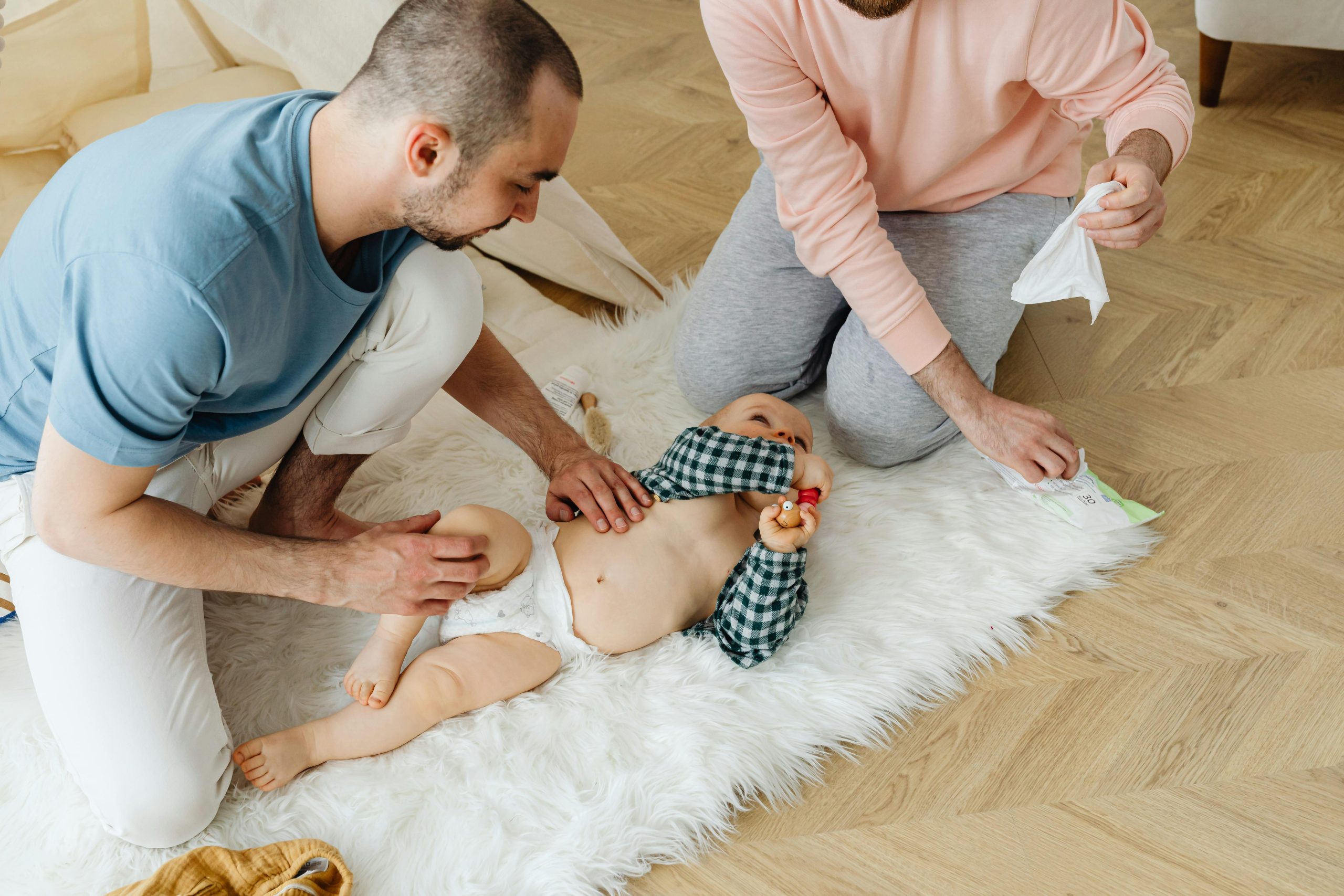Diaper Duty Demystified: Mastering the Art of Timely Changes 
Navigating the wondrous world of parenthood brings countless questions, and keeping your little one clean and comfortable is a top priority. When it comes to diaper changes, understanding the ideal frequency can feel like an intricate puzzle. Fear not, new parents! This comprehensive guide,delves deep into the factors influencing diaper change frequency, empowering you to confidently tackle this essential aspect of baby care.
Decoding the Diapering Frequency:
While there’s no “one-size-fits-all” answer, general guidelines exist:
- Newborn Necessities: Frequent changes are the norm, roughly every 2-3 hours, due to their smaller bladders and bowel movements. This translates to 8-12 changes per day, but remember, individual variations occur.
- Growing Gracefully: As babies grow, their capacity increases, leading to less frequent changes. By 6 months, you might change diapers 6-8 times daily, transitioning to 5-7 changes by 1 year.
Beyond the Clock: Key Cues to Consider:
These guidelines are starting points. Several factors influence the ideal frequency for your unique baby:
- Wetness and Messiness: The most reliable cue is your baby’s comfort. Check for a wet or soiled diaper frequently, and change it promptly to prevent discomfort and potential rashes.
- Urination Rhythms: Some babies pee more frequently, requiring faster changes. Observe your baby’s pattern and adjust accordingly.
- Pooping Power: Bowel movements vary greatly. Some babies poop several times a day, while others go every few days. Change when needed to maintain hygiene.
- Activity Level: Increased activity can lead to more frequent urination, necessitating changes accordingly.
Expanding the Scope: Factors Beyond the Obvious:
- Growth Spurts: During these periods, babies might need a bigger diaper and more frequent changes due to increased capacity and output.
- Dietary Delights: Introducing new foods can affect bowel movements, potentially requiring more diaper changes.
- Travel and Disruptions: Changes in routine can affect urination and pooping patterns, so be prepared for adjustments.
Proactive Prevention: Keeping Rashes at Bay:
- Diaper Rash Defense: Apply a barrier cream at each change to prevent irritation, especially after messy diapers.
- Thorough Drying: Ensure proper cleaning and drying at each change to prevent moisture buildup and irritation.
- Breathable Comfort: Opt for diapers with good airflow to minimize discomfort and potential rashes.
Understanding Your Baby’s Language:
Babies communicate through nonverbal cues. Learn to decipher theirs for timely changes:
- Fussiness Symphony: Crying, squirming, or discomfort often indicate a wet or soiled diaper.
- Facial Expressions: Grimacing or frowning might be a sign of discomfort due to a full diaper.
- Touchy Communication: Reaching for the diaper area or pulling at their legs could signal a need for a change.
Remember:
- Embrace Individuality: Every baby is unique, so adjust frequency based on individual needs and cues.
- Over-changing Isn’t Harmful: If in doubt, change the diaper. Frequent changes won’t harm your baby.
- Trust Your Instincts: You know your baby best. Pay attention to their behavior and adjust the frequency accordingly.
Bonus Tips for Smooth Sailing:
- Be Prepared: Have diapers, wipes, cream, and a changing pad readily available in designated areas.
- Routine Magic: Establish a calming and consistent diaper-changing routine for both you and your baby.
- Embrace the Mess: Diaper changes can be messy, but they’re also bonding opportunities. Sing songs, talk to your baby, and make it a fun experience.
By understanding the factors influencing diaper change frequency, observing your baby’s cues, and implementing these helpful tips, you can confidently navigate this essential aspect of parenthood, ensuring your little one’s comfort and hygiene throughout their diapering journey. This empowers you to move beyond rigid schedules and embrace the unique rhythm of your baby’s needs, fostering a happy and healthy development. Remember, you’ve got this!





